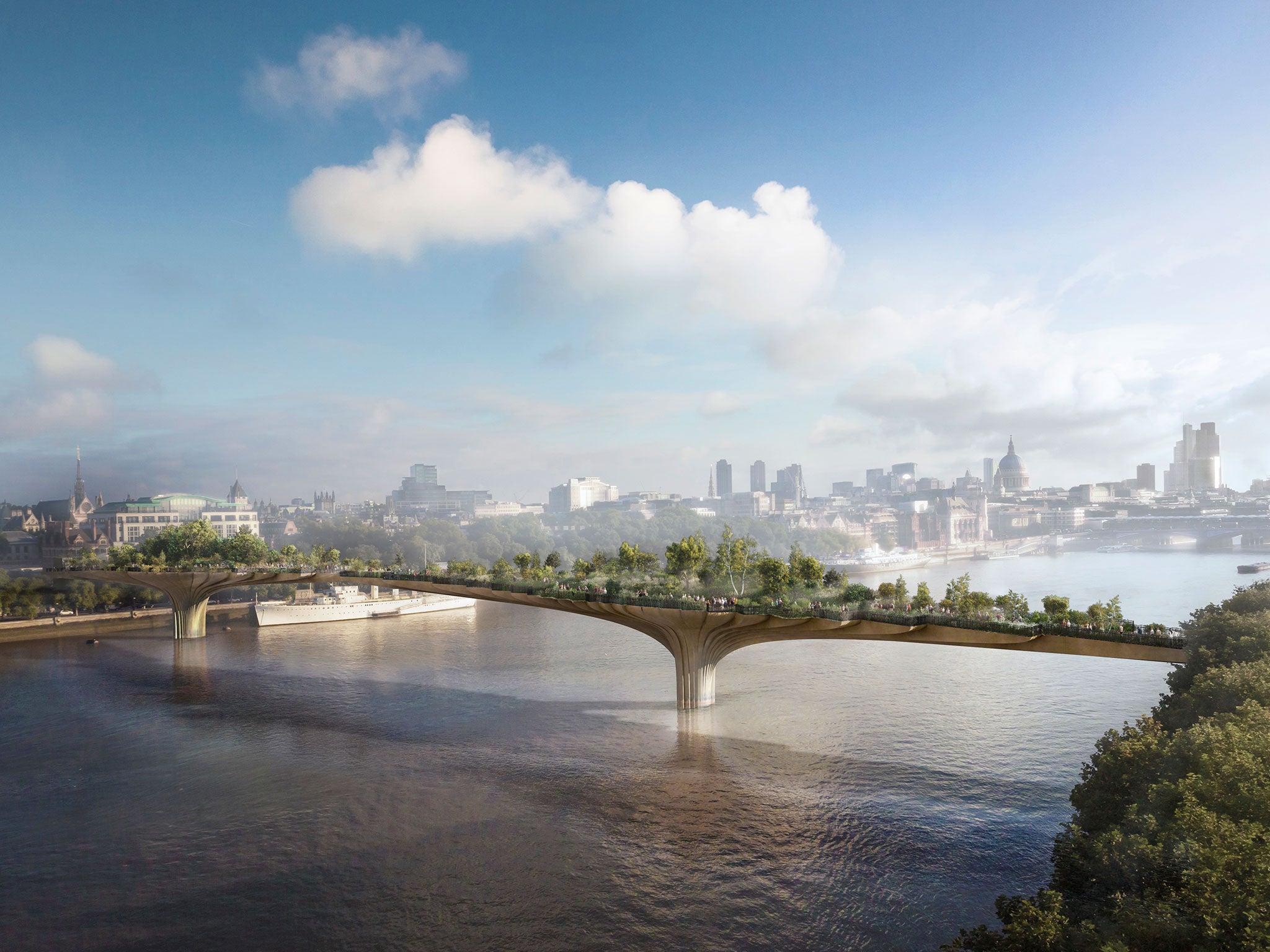Instead of one Garden Bridge that costs a fortune, why not lots of smaller, cheaper ones?
I can think of so many more deserving projects that would benefit from this £60m


As a gardener and a Londoner, I was excited when I first heard about the Garden Bridge – an ambitious project for a planted walkway across the Thames. The capital is so dense in traffic, and this bridge would be, I imagined, an oasis of meadow flowers, somewhere to escape the noise and fumes. Sure, London has its beautiful parks, but this would be the city’s answer to New York’s High Line – a route as well as a destination for its busy inhabitants, fringed by stunning garden design, against an iconic backdrop.
Yet the Garden Bridge is dangerously close to becoming to this Government what the Millennium Dome was to a previous one: a vast waste of taxpayers’ money on an ill-conceived project with dubious public benefit. It is still in its early planning stages and a judicial review of the planning application has been granted, thankfully, because there are so many better ways to use the £60m of public funds earmarked for it.
How did it go so wrong? When the plans were first launched in 2013, with Thomas Heatherwick, who designed the London Olympic Cauldron, and the leading British plantsman Dan Pearson on board, it sounded incredible. I don’t doubt that, given the track record of these two men, the bridge itself would be beautiful and the planting breathtaking – just as the garden designer Piet Oudolf made the High Line so much more than just a concrete walkway.
The Millennium Dome was stunning when it was unveiled in 1999. That didn’t make it right. One of the problems with the bridge, as its objectors, such as campaigners Thames Central Open Space, have set out, is that it will gobble up some of the things that already make the area around the South Bank not just another tourist destination: 30 of its trees that give it an atmosphere akin to Paris or another Continental capital will be chopped down to make way for the landing platform on the bridge’s south side. The bridge will also obscure the view from the South Bank of St Paul’s Cathedral. The big issue for me, on top of these aesthetic problems, is the question mark over whether the Garden Bridge will be truly public, and if not, why are we spending £60m of our cash when, as the Government never fails to remind us, we are living in austerity, and the £175m total price tag was originally supposed to come entirely from private investment?
The public money – £30m from George Osborne at the Treasury and £30m from London Mayor Boris Johnson, as well as an estimated £3.5m in annual maintenance costs – is coming from funding streams intended to be for transport infrastructure. Yet the Garden Bridge will not, under current plans, be a true public right of way. Groups of eight or more are banned unless they apply for a special permit, which rules out an easy family picnic over the Thames (the High Line limit is 20).
Restricting numbers suggests that there will be a ticketing operation in place – which does not happen in New York City. Cycling – the one mode of transport in desperate need of help in the capital – is banned, so you would have to wheel your bike across. The planning documents also suggest that the Garden Bridge will be closed for hospitality and private events – once a month at first, though this could increase in future. As anyone who attends the Chelsea Flower Show will tell you, there’s a lot of money in corporate hospitality linked to stunning gardens. But Chelsea is a grand show with ticket prices run by a charity, the RHS. It doesn’t masquerade as a public right of way.
I can think of so many more deserving projects that would benefit from this £60m. In 2013, Johnson declared that he was creating “mini-Hollands all over the capital” – a network of safe cycle routes, and work on the first, the East-West Superhighway, has already started, while a second, running north to south in the capital, is also planned. These are desperately needed but they do not stretch beyond central London. What commuters need are safe, fully segregated cycle routes taking them from the suburbs into these two new superhighways.
Or the money could be used for greening the grimiest urban areas in London and other cities across the country. Why should the leafiest areas, literally, be confined to the wealthiest? There are charitable or volunteer-run projects, like Incredible Edible Bristol or the Edible Bus Stop in Brixton, south London, where blank verges are transformed into vegetable patches. Every spring, the (very non-corporate) Chelsea Fringe festival celebrates this sort of grass-roots community gardening.
On a small scale, these projects enhance neighbourhoods, and are largely created for free by volunteers. Imagine what £60m could do – maybe £1m in 60, or £500,000 in 120, of the nation’s concrete grey spots? This would be 120 small, vital and uplifting, garden bridges for the nation to enjoy. They would not amount to a grand vanity project, but they would be what public spaces should be: never closed and always ours.
Join our commenting forum
Join thought-provoking conversations, follow other Independent readers and see their replies
Comments